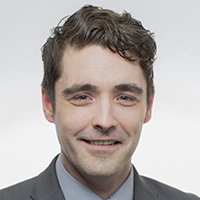Workshops: Design Considerations for Stack Effects in Hot and Arid Climates

Niall O'Sullivan
Associate Director & Regional Manager
Windtech Consultants, London
The increasing development of high-rise buildings globally requires a consideration of these buildings’ response to the local climate. This consideration needs to be a whole-building approach, whereby the internal and external conditions, while considered separate, can have notable driving effects. The design response highlights the importance of collaboration between the design disciplines to achieve a successful outcome.
This phenomenon is largely caused by the interaction between external and internal conditions for high-rise developments. This drives the internal movement of airflow within buildings, due to the difference between internal-external temperatures. While this occurs in all buildings around the world, the effect is most notable in extreme climates, where temperature differences, either hot or cold, are far greater. We need to consider during the design process how the outside can affect occupant comfort (including temperature and internal wind speeds), operational implications (such as lift-door pressurization, wind entry and mechanical ventilation performance) to potential health and safety issues, including control of air movement from smoking areas in a building, to the downwards air movement of smoke during fire scenarios associated with reverse stack effect.
This presentation investigates the implications of high-rise design on internal flow patterns (comfort conditions and smoke control), the effects on mechanical ventilation (cooling/heating) and pressurization of entry and lift doors. Case studies are presented for two projects: One located in the hot environment of the Middle East (reverse stack effect). The other case is located in an arid climate (both hot and cold). The presentation also discussed effect of pressure differences, mechanical effects, localized wind conditions and façade air-tightness on the internal flow effects.
